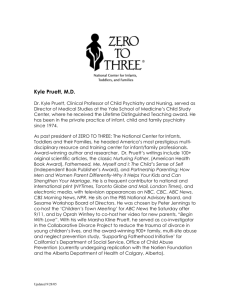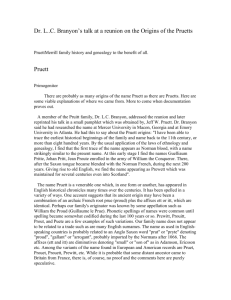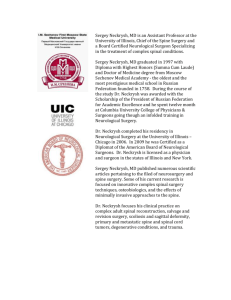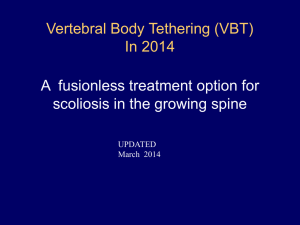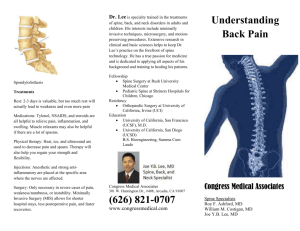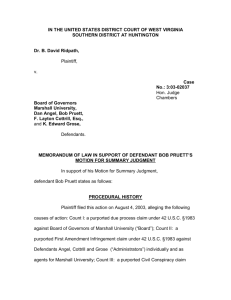Pain Free Living After Spine Surgery
advertisement
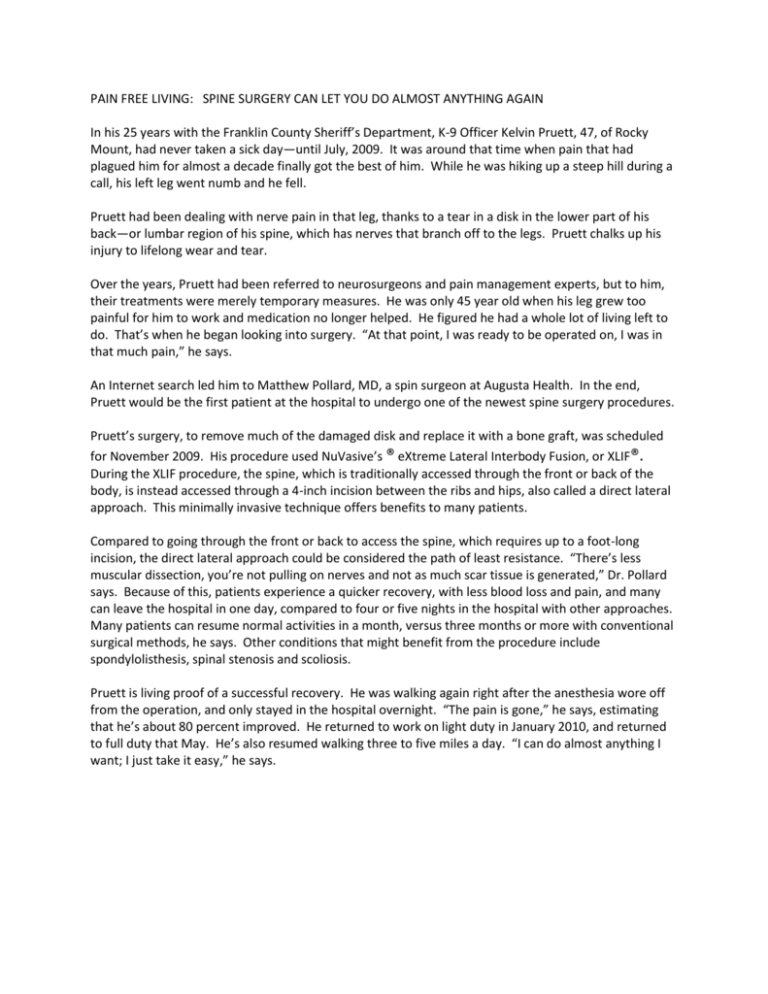
PAIN FREE LIVING: SPINE SURGERY CAN LET YOU DO ALMOST ANYTHING AGAIN In his 25 years with the Franklin County Sheriff’s Department, K-9 Officer Kelvin Pruett, 47, of Rocky Mount, had never taken a sick day—until July, 2009. It was around that time when pain that had plagued him for almost a decade finally got the best of him. While he was hiking up a steep hill during a call, his left leg went numb and he fell. Pruett had been dealing with nerve pain in that leg, thanks to a tear in a disk in the lower part of his back—or lumbar region of his spine, which has nerves that branch off to the legs. Pruett chalks up his injury to lifelong wear and tear. Over the years, Pruett had been referred to neurosurgeons and pain management experts, but to him, their treatments were merely temporary measures. He was only 45 year old when his leg grew too painful for him to work and medication no longer helped. He figured he had a whole lot of living left to do. That’s when he began looking into surgery. “At that point, I was ready to be operated on, I was in that much pain,” he says. An Internet search led him to Matthew Pollard, MD, a spin surgeon at Augusta Health. In the end, Pruett would be the first patient at the hospital to undergo one of the newest spine surgery procedures. Pruett’s surgery, to remove much of the damaged disk and replace it with a bone graft, was scheduled for November 2009. His procedure used NuVasive’s ® eXtreme Lateral Interbody Fusion, or XLIF®. During the XLIF procedure, the spine, which is traditionally accessed through the front or back of the body, is instead accessed through a 4-inch incision between the ribs and hips, also called a direct lateral approach. This minimally invasive technique offers benefits to many patients. Compared to going through the front or back to access the spine, which requires up to a foot-long incision, the direct lateral approach could be considered the path of least resistance. “There’s less muscular dissection, you’re not pulling on nerves and not as much scar tissue is generated,” Dr. Pollard says. Because of this, patients experience a quicker recovery, with less blood loss and pain, and many can leave the hospital in one day, compared to four or five nights in the hospital with other approaches. Many patients can resume normal activities in a month, versus three months or more with conventional surgical methods, he says. Other conditions that might benefit from the procedure include spondylolisthesis, spinal stenosis and scoliosis. Pruett is living proof of a successful recovery. He was walking again right after the anesthesia wore off from the operation, and only stayed in the hospital overnight. “The pain is gone,” he says, estimating that he’s about 80 percent improved. He returned to work on light duty in January 2010, and returned to full duty that May. He’s also resumed walking three to five miles a day. “I can do almost anything I want; I just take it easy,” he says.
